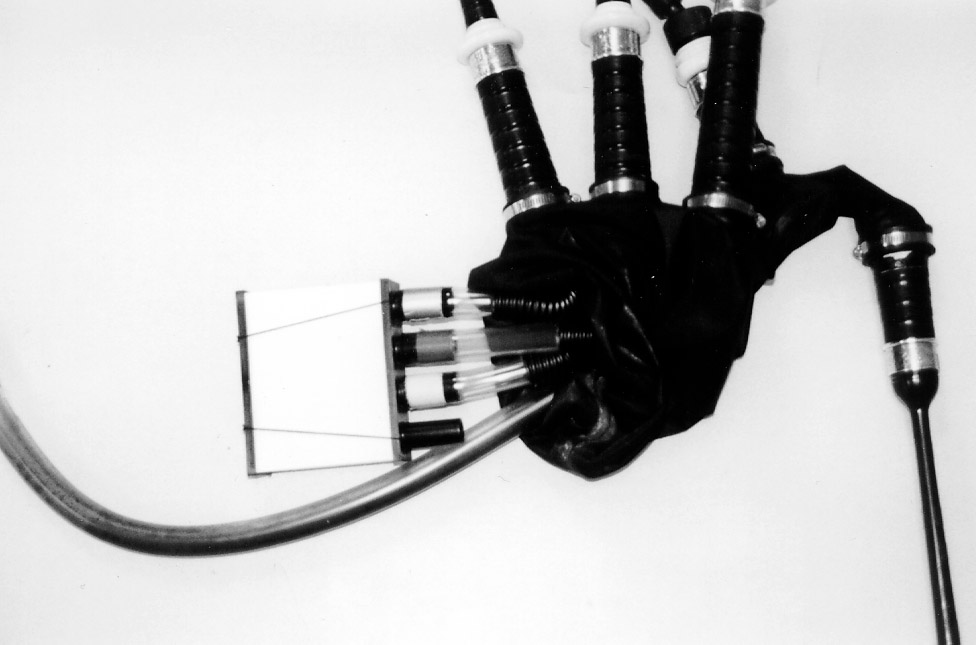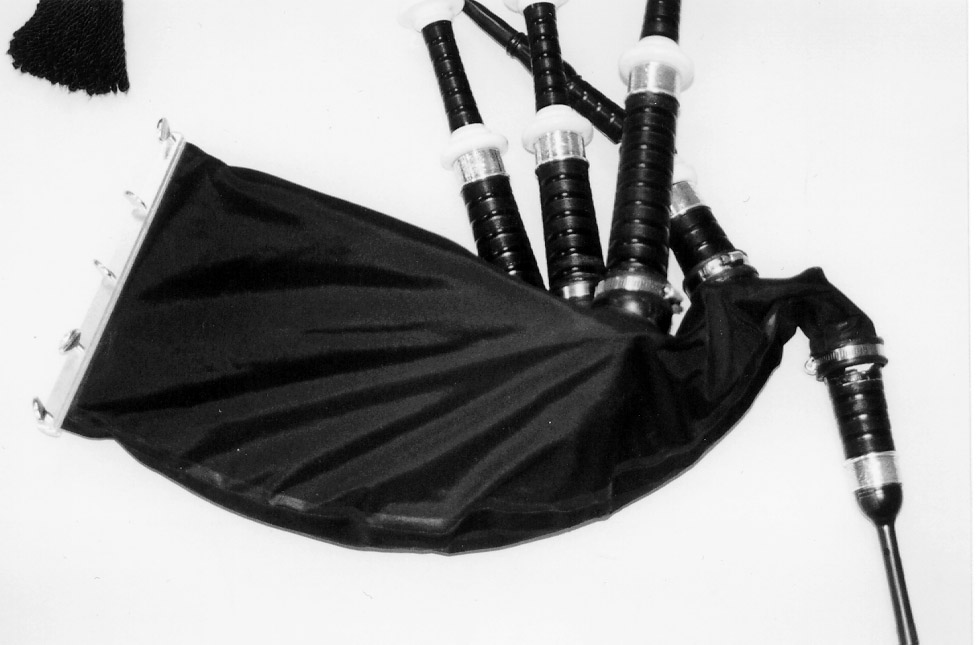From the archives: Jim McGillivray’s February 1998 review of the breakthrough Ross Canister Pipe Bag system
Nearly 25 years ago, Geoff Ross of Melbourne, Australia, revolutionized the Highland bagpipe with the introduction of the first commercially available moisture control system. It was a natural counterpart to the Ross synthetic pipe bag, which he had introduced a few years earlier and, since then, all manner of competing products have been brought out.
While there are now all manner of synthetic bags, moisture control systems and synthetic drone reeds available today, a strong return to traditional sheepskin, hides and cane – particularly with higher-grade bands – has also occurred. There’s more choice than ever for today’s piper.
But it really all started in 1997, so it’s fun to look back to February 1998 when Jim McGillivray reviewed the Ross moisture control system and bag. It would turn out to be a historic turning point, and we were there to cover it. Here’s his review.
Moisture problems? Better try kitty litter! A look at an unusual bag that’s starting to catch on
The Ross Canister Pipe Bag
Ross Bagpipe Reed Propriety Ltd.
Victoria, Australia
Estimated price: CAD$225
Reviewed by Jim McGillivray

It was a small box, but when I opened it and pulled the contents out onto the floor, I began questioning my better judgment. This was supposed to be a Geoff Ross Canister Bag. Certainly there was a bag here. But there were also hose clamps, tubes, plastic boxes filled with what appeared to be gravel, and a screwdriver.
Fortunately, there were also instructions. And the instructions were good. Within an hour I had the contraption clamped (no, not tied) on to my stocks. Now I would see if it could do what I had paid CAD$225 for.
And what was that? Control water. Keep the outsides of my reeds dry. Prevent water from condensing inside my drone bores and running down into my drone reeds. This problem is the bane of many pipers’ hobby. It causes drones to go unsteady or shut off without apparent explanation. Water is our greatest enemy, and here was a product that claimed to conquer it.
The Ross bag first appeared on the market in 1987, the product of Ross Bagpipe Reed Propriety Ltd. of Victoria, Australia. Geoffrey Ross was also the creator of the first widely marketed plastic drone reed, a hybrid plastic body/cane tongue reed that has racked up sales of more than 15,000 sets since it was introduced in 1985. Clearly, the man has a knack for radical innovation.
The idea behind the canister bag came from the technology used to dry inert gases, particularly to keep breath moisture out of oxygen masks used by pilots flying at high altitude. The concept is simply to run the moist air from the lungs through a canister of absorbent material that effectively soaks up the water vapour. The absorber used in the Ross canister is, believe it or not, high-grade, sand-free kitty litter made from a material that in prehistoric times began as coral.
Here’s how the system works. The bag is made out of a breathable fabric that is much like – but isn’t, Ross stresses – Gore-Tex. Inside the bag is a plastic canister measuring 5″ x 4″ x 1.5″. This canister is divided into four chambers – one for each drone and one for the chanter. There is a “lid” on the canister; four tubes protrude from it. These tubes extend to the base of the four stocks, where they attach with a rubber sleeve. The tubes are of various lengths to reach each stock. The stocks themselves ‘tie on’ to tough rubber grommets on the bag with hose clamps (thus the screwdriver). A fine screen at the opposite end of the canister encloses the kitty litter but allows air to pass through.

The crux of the concept now becomes apparent: the air coming into the bag through the blowstick cannot reach the drones and chanter without first passing through the kitty litter. By the time the moist air filters through this absorber, it is virtually bone dry. Strangely enough – and this surprised me the most – there is absolutely no restriction of air as it passes through the canister and tubes.
What happens when the kitty litter becomes saturated? Simple: you open up the bag, pull the canister out, and dry the stuff. One of the oddest features of the Ross system is that the bag is not sealed. Instead, a removable bar clamp runs the length of the back end to hold it shut and perfectly airtight. Every couple of weeks, if you’re playing regularly, take off the clamp, reach into the bag, remove the canister from the lid, dump the kitty litter onto a plate and nuke it for five minutes in a microwave oven. Let it cool for 10 minutes, pour it back into the canister, re-attach the canister to the lid and clamp the bag shut. Putting the clamp back on is the most awkward step, but you soon get a knack for it.
This whole process takes 15 to 20 minutes. In addition, Ross recommends that the bag periodically be left open for the inside to dry. So, the system is certainly not maintenance free. But this 20 minutes every couple of weeks is time extremely well spent, as the Ross Canister Bag system lives up to its promise of eliminating moisture from reeds and drones. The system also comes with a spare filled canister – a nice touch in these days of extreme cost cutting.
How long will the bag last? I won’t know for a while, but Ross claims he hasn’t had a bag returned since he finished his last set of enhancements three years ago.
Whereas I had previously encountered serious moisture problems within 30 to 40 minutes of playing in my basement, with this system I am able to play as long as I can stand on my two feet, with no water problems at all. If you’re a piobaireachd player, or a piper who likes to play for extended periods without a break, this is a godsend. A number of bands, including the Victoria Police and the Halifax Police, require all their pipers to use the system, effectively eliminating moisture problems encountered in cool, wet weather.
Importantly, use of any of the four tubes is optional. This has particular advantages for players who like a bit of moisture in their chanter reed. I simply leave the chanter tube out, as do a number of other players I know. In fact, I found one of the few faults with the system when I hooked up the chanter tube, which pushed the chanter into an awkward and stiff position for me. I happily removed the tube again (it took about five minutes) and remain very satisfied without it. The bag itself, again to my surprise, is one of the most comfortable I’ve ever played. Mine is a small (I stand a daunting 5′ 5″), though they are also available in medium and large.
How long will the bag last? I won’t know for a while, but Ross claims he hasn’t had a bag returned since he finished his last set of enhancements three years ago.
The Ross Canister Bag may not be for everyone. If you rarely or never encounter moisture problems with your current bag, well . . . be happy. But for the rest of us, Geoffrey Ross has used a forward-thinking concept and excellent craftsmanship to address one of the bagpipe’s most ubiquitous problems. To my mind, after three months of playing with complete satisfaction, I think he’s produced a winner.

NO COMMENTS YET